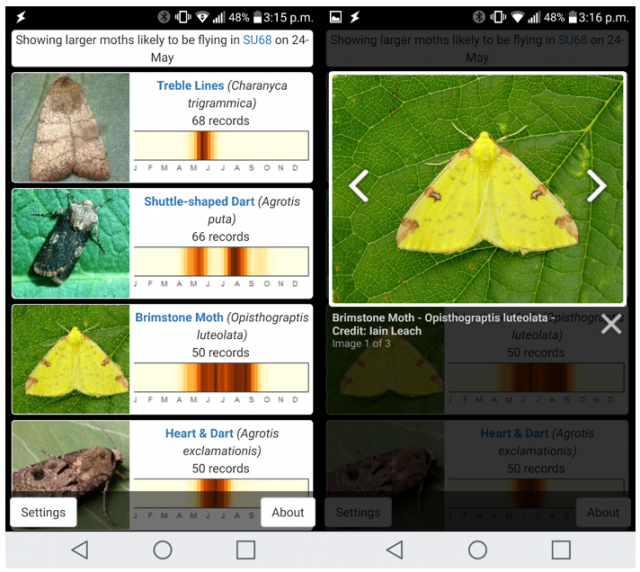As part of our project on moths and light pollution, we’re looking for your help to shine a spotlight on the secret lives of nocturnal moths in your back garden, and help us learn more about nighttime pollination!

Parks and gardens are a haven for wildlife, creating pockets of habitat for a wide range of animals in our increasingly urbanised landscape, from birds and small mammals to amphibians in ponds, and a host of insects In Great Britain alone, private outdoor spaces occupy over 728000 hectares of land, so learning how we can best share these spaces with other species could really make a difference to their survival. Recent research in gardens has shown how specific plants and management practices can benefit bees and butterflies, but they are not the only pollinators in need of a helping hand…
Often misunderstood as just clothes-munching pests, nocturnal moths are in fact hugely diverse, and many species are important pollinators – for rare orchids, many wildflowers, and even some commercial crops like strawberries. Because they are active at night when we are asleep, their hard work often goes unnoticed, and we still have much to learn about flower-visiting moths and the plants that depend on them. Right now, moth populations are also in serious decline in the UK and Europe, so it’s crucial that we understand more about both their ecological roles and how we might be able to help them thrive. By searching for moths feeding on flowers in you local patch, you can uncover new information about potential plant-pollinator relationships, to help build a better picture of nighttime pollination.
Who can take part?
Anyone – all you need is access to an outdoor space with flowers, a torch and 10 minutes of your time! If you’re already a keen moth-trapper and can identify most common species, that’s great, but you don’t need to know anything about moths to contribute – simply counting the numbers of moths on flowers of different colours is enough. We’d love for kids to take part too, but please only go looking for moths with a responsible adult. You can survey from anywhere in the world, at anytime of night from dusk to dawn, until October 2024.

How to take part
- Find a safe place to survey at night – a private garden or other secure outdoor space
- Record the date, time, postcode of the area, and take note of the lighting conditions : can you see the moon? is it cloudy or clear? any artificial lights nearby?
- Use a torch to search flowering plants in the area for 10 minutes. If you have one, a red light is less likely to disturb the moths you encounter.
- If you see a moth landing on a flower, or hovering around it and feeding (probing with its long feeding tube, or proboscis), it could potentially be acting as a pollinator for that plant! Note the flower colour, flower species (if you can), and number of moths of that type on that kind of flower. Please don’t count any moths that are just flying around without attempting to feed, or landing on leaves and branches. If you like, you can use a butterfly net and a clear pot to briefly catch the moths to get a closer look or take a photograph, to help you identify them to family or species level. Stop your timer when you are observing or catching a moth, and restart it when you resume searching.
- Submit your records using our online form below, or, if you prefer, you can download a paper copy to return by email or post.

You can take part as many times as you like throughout the summer, from multiple locations or the same place – it’s likely you’ll see different interactions as new flowers bloom, new species of moths emerge and the weather warms up! And please share the survey with your friends and family!
How to identify moths for this survey?
Some moths will settle on flowers to feed, so you might be able to get a close look , or take a photograph with your phone. If not, you can use a butterfly net (or fashion one from an old badminton racket and some netting) to catch the moth, then transfer it to a clear pot to get a better look. These free apps are really handy for identifying common species – but it’s always best to check with a field guide, and only identify the species on the survey form if you’re confident! Don’t forget to release the moths unharmed immediately after, so they can carry on with their nighttime activities.

An app developed by the Centre for Ecology and Hydrology, UK Moths & Butterfly Conservation, highlighting the most likely species to be found in your area at a given date – a great way to get to know your local moth fauna!
Drawings by Andrew Szopa-Comley

